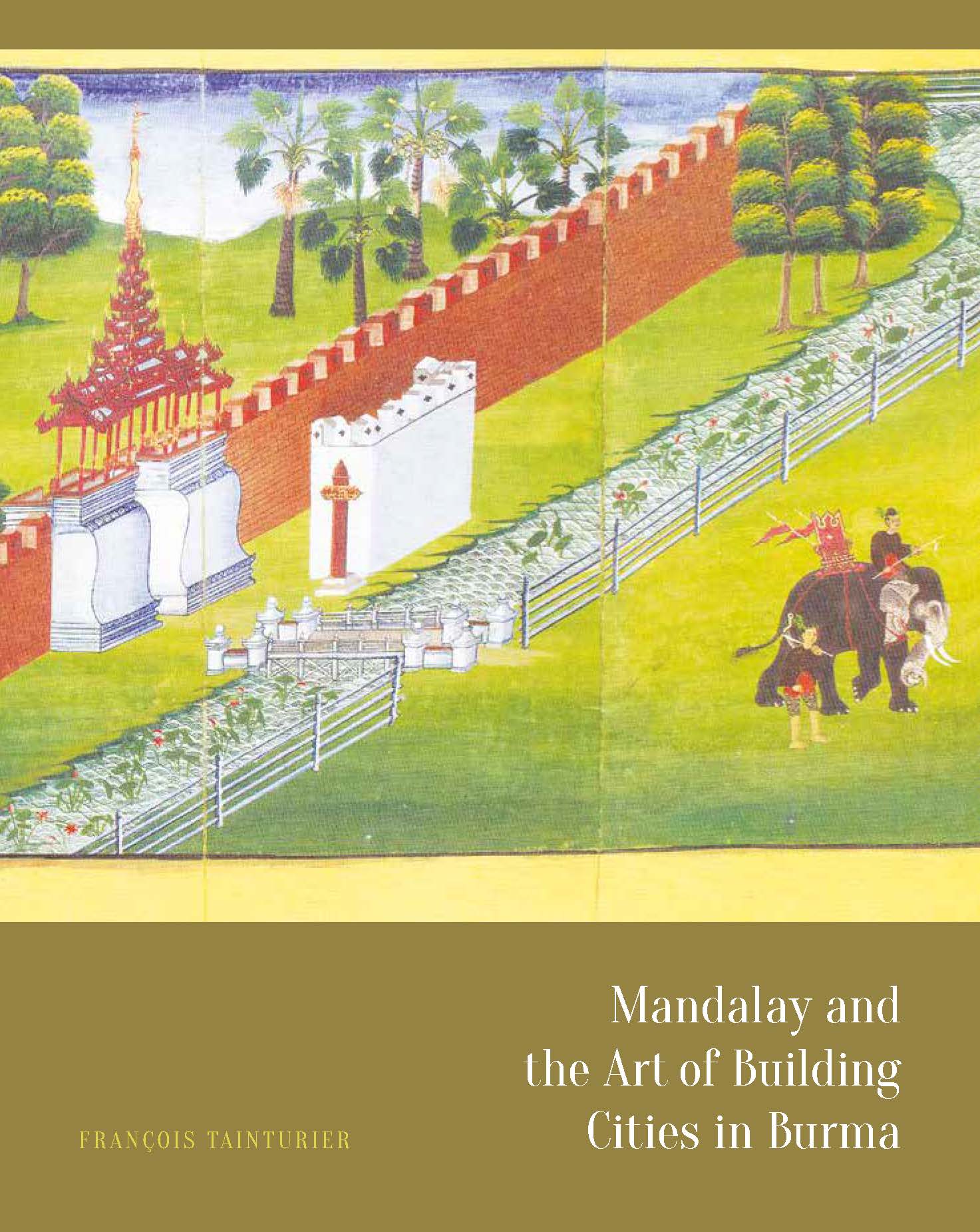Mandalay and the Art of Building Cities in Burma
“François Tainturier’s innovative and richly illustrated study, detailing the planning that constructed Burma’s new capital of Mandalay and its vast environment as a fortified Buddhist sanctuary, is a significant contribution to Southeast Asia’s urban history." – Barbara Andaya, University of Hawai‘i
Drawing on original Burmese texts and illustrations, recent scholarship and mapping, "Mandalay and the Art of Building Cities in Burma" argues that the founding of Mandalay shifted critically in emphasis and scale from a protocol that established the royal city as a ‘cosmic city’ to one that materialized the royal capital as a sanctuary. In the process, the founding protocol used Buddhist narratives as models for action and drastically altered patterns of spatial order prevalent at former royal capitals. The book renews scholarly discussion on Southeast Asian urban traditions and offers a critical investigation into the ‘cosmic’ dimensions of one of the region’s centers of power. It provides further insight into how rulers articulated lineage, power, and promotion of Buddhism by creating potent landscapes. The systematic planning of Mandalay and construction of its potent landscape constituted the expression, not formulated in words but in tangible form, of the throne’s claim of Burma as a ‘Buddhist land’ (Buddha-desa) at a time when Lower Burma had been annexed by non-Buddhist believers.
Drawing on original Burmese texts and illustrations, recent scholarship and mapping, "Mandalay and the Art of Building Cities in Burma" argues that the founding of Mandalay shifted critically in emphasis and scale from a protocol that established the royal city as a ‘cosmic city’ to one that materialized the royal capital as a sanctuary. In the process, the founding protocol used Buddhist narratives as models for action and drastically altered patterns of spatial order prevalent at former royal capitals. The book renews scholarly discussion on Southeast Asian urban traditions and offers a critical investigation into the ‘cosmic’ dimensions of one of the region’s centers of power. It provides further insight into how rulers articulated lineage, power, and promotion of Buddhism by creating potent landscapes. The systematic planning of Mandalay and construction of its potent landscape constituted the expression, not formulated in words but in tangible form, of the throne’s claim of Burma as a ‘Buddhist land’ (Buddha-desa) at a time when Lower Burma had been annexed by non-Buddhist believers.

Publisher
NUS Press
ISBN
9789814722773
Publication date
1 Jan 2021 – 31 Dec 2021
Specialisation
Humanities
Theme
Urban / Rural
Religion
Art and Culture
History
Region
Myanmar